In 1947, Chuck Yeager stood on the desert floor of Edwards Air Force Base in California, eyes glued to the seemingly infinite expanse of sky above. The barrier rippled around like an unspoken dare: despite all signs and chanting noise, Yeager only had one goal in mind. He was prepared to be the first pilot to fly faster than the speed of sound, which meant daring to challenge the power of the laws of aerodynamics and life. Yeager’s demeanor radiated supreme self-confidence and an almost demanding commitment to his goal; the desire to push human boundaries was as mighty and compelling as the sirens of mythological legend. It was set to be a challenge between a human and a machine, and Yeager was eager to win a spot in the history of aviation. The mere thought of flying beyond the limits of sound was just a suicidal dance of death and heroism, a fight against nature that one was doomed to lose. However, the thought of dying mislaid to Yeager was like fuel for the fire; the new adventurous flight brought him closer to the seemingly unreal purpose that stood on the edge of the visible horizon. Chuck’s objective to break the sound barrier was highlighted by the fact that the world expected it to be a perfect victory.1
Charles Elwood “Chuck” Yeager was born on February 13, 1923, in Myra, West Virginia, a small hamlet in Lincoln County, at the height of the “Roaring Twenties.” Yeager was the second of five children born to Albert Hal Yeager and Susie Mae (née Sizemore) Yeager. Chuck’s father, Albert, worked as a driller for the Ohio River Company, and the family subsisted on a meager salary. Yeager grew up in a rural region and spent much of his free time outdoors hunting, fishing, and exploring the forest. These pursuits eventually led to his interest in aviation and the armed services. The family’s strong work ethic, perseverance, and patriotism would quickly shape Chuck’s fate. His fascination with mechanics and engineering marked Chuck’s early youth in West Virginia.2

Chuck attended Hamlin High School, where he performed poorly academically but excelled in boxing and on the football field. As a high school student, Chuck found part-time work at a local billiard room. During his shift one day, as he was racking the billiard balls for a game of pool, some men told him that a plane had crashed in a nearby field. Curious, he rode his bike to the scene after finishing work. A commercial airliner had crashed, but only the plane was damaged; the pilot safely ejected. Chuck was unconcerned and uninterested, despite witnessing a traumatic and exciting scene. He watched the scene and continued on with no interest in aviation.3
Chuck had forever yearned to leave his hometown in West Virginia. He wished to see the world, and his curiosity was smitten with the pending fear of the unknown. He wanted to go to faraway places, meet new people, and see beauty that he had only seen on postcards and in books. It just so happened that when a military recruiter came to Hamlin once Chuck turned eighteen and had graduated, he was, indeed, contemplating. He had Chuck hooked with tales of amazing “vacations” and travels he had taken with the Air Force. Chuck stopped for a while, questioning the big pitch and thinking of his future. Sure enough, the young man was running home moments later for his birth certificate and graduation diploma to sign up for basic training. By joining the service, he was able to satisfy his desire to travel and make a name for himself around the world.4
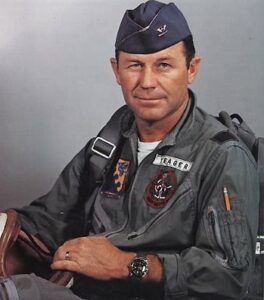
After enlisting in the USAF on September 12, 1941, Chuck began his journey as a private in the military. He was sent to basic training at Jefferson Barracks in St. Louis, Missouri, where he underwent physical training and military drills to prepare him for service. Chuck was determined to do well, even though the training was hard and took a lot of time and effort. He learned how to do what he was told, work with others, and be exceptionally tough. After basic training, he was sent to Wright Field in Dayton, Ohio, to work as an aircraft mechanic for the 341st Aircraft Maintenance Squadron, where he maintained and fixed planes.5
Chuck’s rebellious streak and mischievous humor often got him into trouble. He hated dish duty and his shift guarding the main gates. He somehow always found himself in trouble with his commanding officers, who saw him as the troublemaker he was. Chuck would push his superiors’ boundaries and test limits, whether he was sneaking off base to explore the local town and brothels or playing jokes on his comrades. His antics usually earned him disciplinary actions and extra chores, but it didn’t change his trouble-making ways. Chuck’s charisma and likability usually helped him talk his way out of trouble with his superiors. They kept a close eye on him though, because they knew that his pranks could turn into something more dangerous at any time. He worked hard every day to get those planes back in the air, but he always managed to fit in some playtime.6
One day while working, he spoke with a pilot waiting for his aircraft to be serviced. The pilot, a lieutenant, was very impressed with Chuck’s mechanical skills and prior knowledge of flying. He mentioned that the USAF was looking for enlisted men to apply for flight training and that Chuck might be a good candidate. Chuck was intrigued; he had never thought about becoming a pilot, but the idea sparked something in him. The lieutenant encouraged Chuck to apply for the program, and as Chuck was growing bored with his day-to-day, he took the seemingly harmless chance. After a few weeks, he received a letter informing him that he had been accepted into the program, and he knew this was a chance to make a real difference in the war effort. With his acceptance, Chuck was promoted from private to corporal and began his training as a pilot. He was sent to flight school at Luke Field in Arizona, where he started his journey to become a military aviator.7
Luke Field immediately immersed Chuck into a demanding preparation program that tested the young man on many levels. Chuck had to master flying skills on the AT-6 Texan, a single-engine training aircraft. Fortunately, Chuck was a born pilot. Since the young man was so close to the planes’ mechanics and passionate about the technical details, he studied the nuances of aircraft performance and the operation of its systems very quickly. Moreover, with 20/10 visual acuity, Chuck sharply distinguished enemy aircraft in the air and easily maintained target observation, which was incredibly useful for combat.8
Chuck’s training was tough, with extended study hours and flight training. He was up against competition from the other aviators, most of whom were college grads with many more hours of flying under their belt. Chuck, however, was determined and worked hard without fail. At the end of his training, all his instructors rated him highly. He was eventually assigned to fly the P-51 Mustang, one of the best fighters of the day. Chuck was thrilled to have the opportunity to fly a plane of such a high caliber and quickly learned how to perform at his best.9
After finishing his training, Chuck was finally a second lieutenant and was sent to the 357th Fighter Group to work with the 363rd Fighter Squadron. Flying planes in the Air Force was his dream job, and he was ready to perform at that level. Right away, he was sent to the 363rd Fighter Squadron to fly combat flights as part of his Air Force service. It was his first combat flight, and he quickly became a well-known and renowned fighter there. On his eighth run, he shot down a ME 109 for his first kill. After that, he became an ACE by shooting down an enemy 11.5-ton plane.10

When the war was over, Chuck stayed in the service and was sent to work as a test pilot and engineer for the National Advisory Committee for Aeronautics (NACA) at Wright Field in Ohio until further notice. In 1947, he was chosen to join the elite group of test pilots at the NACA’s Muroc Flight Test Unit (now Edwards Air Force Base) in California, led by Captain Walter F. Greene. Chuck would join this group that was pushing the boundaries of aviation and influencing the direction of flight. His skill and bravery, together with his experience as a fighter and test pilot, made him a perfect candidate for the most difficult and risky flights, such as the attempt to break the sound barrier that was previously considered to be impossible. Chuck developed the P-80 Shooting Star and the XF-84 Thunder fighter among other projects while he was employed at the Muroc Flight Test Unit. The P-80 Shooting Star aircraft was the first operational jet fighter used by the US military, he gave feedback to the engineers and designers on improvements to make before sending them into warfare.11
Chuck was a member of a close-knit team of test pilots at Muroc who were enthusiastic about flying and committed to progressing the aviation industry. Among the group were veterans of both the Korean and World Wars, as well as seasoned technicians and engineers. They put up a strong crew that disproved notions of what was feasible in the sky. Among his teammates, Chuck rose to prominence as one of the group’s most skilled and fearless pilots. The most difficult flight program of all, the X-1 program, saw him as the best of the best because of his capacity to think quickly and remain composed under duress.12
As work on the X-1 program went on, Chuck’s status as a great pilot and innovator kept growing. His peers looked up to him as a leader and a teacher, and engineers and techs working on the project wanted to learn from him. The enthusiasm for flying and the team’s connection created an infectious and supportive environment where people were able to convey their ideas and tackle issues head-on. Chuck in charge meant that the team was prepared to pull off something amazing. With the aircraft’s sleek exterior and strong engine, the X-1 rocket plane was ready to break records for speed and height. Chuck prepared to take the wheel and write history. He was unfailingly confident about himself.13
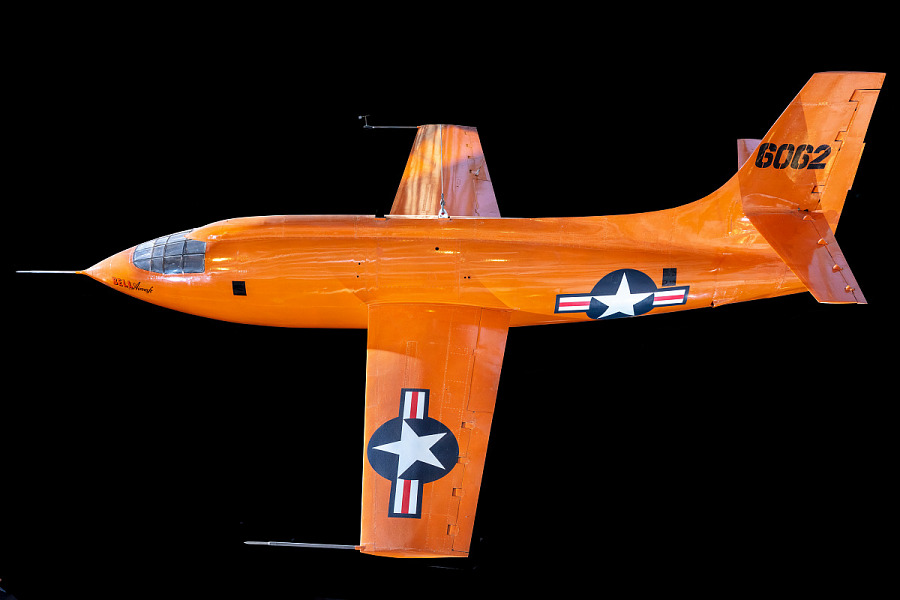
Chuck began getting ready for the X-1 flight by getting a lot of training and briefings from the Bell Aircraft team, which was led by the famous engineer and designer Robert Woods. The X-1 was a revolutionary plane. Its four-chambered XLR11 rocket engine gave it 6,000 pounds of power. Chuck knew a lot about the plane’s systems and skills because he had spent a lot of time in the cockpit and simulator. He was determined to push the X-1 to its limits, even though he knew that it would take precise time and control to break the sound barrier.14
Chuck and the Bell staff spent the days leading up to the trip, finishing last-minute details and making sure everything would go as planned. To get everything in order, the men worked tirelessly. Chuck was the conductor of the exacting X-1, and now they were prepared to take off, since he had mastered the speed and altitude symphony. There was a buzz of excitement, the crew was prepared. Chuck was running on high alert, everything depended on these final moments. He was sure this flight would be different from all the others; he was to break history and discover the unknown. The night before the test flight, Chuck sat in his quarters and read over the mission plan over and over again. His entire flight played out as he closed his eyes, from takeoff to landing. His mind flashed through the possibilities, the skies were his limit, and he would go down in history as the first man to ever break the sound barrier. Searching these possibilities, he found a calm settling in on him, he was ready and prepared to take the X-1 to where it had never been.15
Chuck got into the Bell X-1 aircraft cockpit on October 14, 1947. The plane was a sleek, strong rocket-powered machine that was made to go at speeds never thought possible before. The plane was called the “Glamorous Glennis” after Glennis Yeager, Chuck’s wife and the love of his life whom he named all of his planes after. The aircraft took off from the runway with a roar from the engines and a burst of flame. Chuck was on board for one of the most historic and monumental flights that have ever taken place. As Chuck climbed to reachable and familiar heights, he felt the familiar pressure rising in his ears and the rush of adrenaline going through his body. He was getting close to the sound barrier, so he had to concentrate, remember what he was taught, and do something that seemed impossible.16
“I was probably the last guy who will get to do the kind of flying I did. I came into the military as a 18-year-old-kid before World War II, never having been in an airplane, never having ever seen one on the ground. It turned into quite an opportunity. (Chuck Yeager 2002) 17 Chuck leveled off at high altitudes over 20,000 feet, and his aircraft, the Glamorous Glennis, began to shudder and vibrate. Chuck gripped the control stick tightly; his eyes fixed on the instrument panel as the Mach meter ticked upwards and he reached supersonic flight. Chuck’s heart raced with anticipation as he felt the machine surge forward, the rocket engine’s power pushed him deep into his seat. There was an intense sensation as the aircraft broke the sound barrier, as if the plane was shuddering and shaking around him. The next sign of glory was a deafening sonic boom that could only be heard from the ground. The X-1 had entered a new realm, a supersonic world where the rules of aviation were rewritten. Chuck’s heart raced with excitement as he gazed at the instrument panel, watching the Mach meter tick upwards, confirming what he already knew: history had been made.
The Muroc Army Airfield team on the ground was beyond excited to be able to see from where they stood that all their hard work had paid off. Robert Woods, the chief designer, was especially proud; the chance he took on the bright young man with nothing more than a high school diploma had paid off. The other test pilots, including Scott Crossfield and Joe Walker, two of Chuck’s closest companions, also stood on the ground, ecstatic about their friends’ newfound success. Colonel Albert Boyd, the base commander, was on the phone to Washington, relaying the news to the Pentagon immediately of Chuck’s defeat of the sound barrier.18
The news was to be kept a secret by the Air Force to the public for more than half a year, but regardless of whether the world knew it yet, Chuck was a hero, and anyone who cared would know soon enough. He proved that flying faster than the speed of sound was possible and broke the myth of the sound barrier’s impenetrability. The breakthrough that the X-1 pilot achieved would change how military and civil aviation was done forever; it would directly lead to the age of jet aircraft, where supersonic fighters and the upper atmosphere were explored. “A big part of it is being at the right place at the right time. You either are or you aren’t. You don’t have to be good to be a legend. All you have to do is live. That’s about the way it stacks up.” (Chuck Yeager, October 23, 1983) 19
Everyone saw in the X-1 program what was possible with bravery and creativity; it showed that people could accomplish the impossible. But that was not the end of it. In the months and years to come, Chuck’s achievement would inspire a new generation of pilots and engineers, pushing further boundaries that never would’ve been reachable without the help of the high school graduate from Hamlin. The X-15 would go on to shatter all flight records, going even faster and higher than the X-1, and the development of jet aircraft such as the F-104 Star fighter and the Concorde would become the standard. Chuck Yeager, the soft-spoken pilot from West Virginia, would become a legend, an American hero whose name would reverberate through the ages. 20
When Chuck returned from his flight, his peers greeted him ecstatically. Parades and celebrations in his honor were held across the country when news broke. When the press had settled down and it was time to return to his normal life, he continued working as a test pilot, flying the X-15 and countless other experimental aircraft and mentoring younger pilots. Yeager rose to fame, making appearances on television, in movies, and in the top national best-selling memoir. Years after he left the military, he remained the same Hamlin, West Virginia, man. He continued to fly, maintained contacts with the aviation community, and utilized his position to promote safety.21

When not at work, Chuck was a loving husband to Glennis and their kids. His passion for being a parent and husband was unwavering, and his family came first always. Chuck maintained contact with friends and colleagues from the inaugural X-1 program as well. Because of the strong bond they made at such an important time in history, they would stay close friends until the end of their own lives.22
As the years went by, Chuck’s reputation grew, and his name came to mean bravery, skill, and creativity. In the 1960s and 1970s, he was a well-known TV show guest on shows like “What’s My Line?” “This Is Your Life” and “The Tonight Show Starring Johnny Carson.” He would make people laugh with stories from his flying adventures. Chuck even had a small role in the popular TV show “I Dream of Jeannie.” Because of his popularity and charm, Yeager was in high demand as a product spokesperson; he was in ads for General Motors and ACDelco. He was great in front of the camera because of his unique voice and rugged, All-American good looks, and he became a beloved figure in American society.23
Chuck appeared in a number of movies in addition to his TV roles. In 1983, he came out in the movie “The Right Stuff,” based on Tom Wolfe’s best-selling book about the early days of the American space program. His other part was as a sheriff in the 1980 movie “Smokey and the Bandit II,” where he tried to catch the main characters, Bo “Bandit” Darville and Cledus “Snowman.” Seeing as Chuck was a great pilot and test pilot, he was also a great consultant for anything flight simulator-related like video games. He worked on three games that bore his name, and he used his skills and knowledge of flying to help make the games more accurate and immersive. Chuck also drove the pace car twice in his life to start the Indianapolis 500.24
Chuck was honored and awarded many times over the course of his life for his contributions to aviation and American society. The Congressional Silver Medal is the highest public honor that Congress can give to a citizen, and he received it from President Gerald Ford. Chuck was admitted into the California Hall of Fame, the National Aviation Hall of Fame, and the International Air & Space Hall of Fame. Several roads in West Virginia and the Yeager Airport in Charleston, West Virginia are named after him, showing how important he was to the state. Though he had never been to college, his intelligence would also lead to honor. In recognition of how well-known he was, Marshall University named its top scholarship program the Society of Yeager Scholars to honor his lifelong commitment to education and his work in flight. As if that wasn’t reason enough to talk about him, he also wrote two best-selling autobiographies, Yeager: An Autobiography and Press On!: Further Adventures in the Good Life. 25
It seemed like Chuck’s story and list of accomplishments seemed to get longer and more well-respected as the years went by. In American aviation history, he remained a well-known figure and a hero, a living representation of progress and innovation. His name, skill level, and confidence became associated with courage, talent, and perseverance, encouraging many to follow their dreams and hopelessly break all limits that might open up endless possibilities.26
When we think about Chuck Yeager’s life and the change he made in the world, we remember how important it is to be brave. We are taught that we can also become great if we work hard, are determined, and are willing to take risks. The world needs people to want to make a change and inspire others to do the same. It’s easy to see how the American dream flows in Chuck’s story; it shows that if we have freedom, take chances, and have the will to go and do beyond what we think is possible, we can do anything we set our minds to. It’s a reminder that we can choose how to react, live, and inspire others no matter where life takes us or what problems we face. It’s not enough for Chuck Yeager to have broken the sound barrier; he also broke down limits to what is possible and inspired others to do the same.27
- General Yeager foundation team, “Chuck Yeager Foundation,” Foundation, General Chuck Yeager official website, n.d., https://chuckyeager.com/. ↵
- Don Keith, Chuck Yeager: World War II Fighter Pilot (New York: Caliber, 2022), 8–11. ↵
- Don Keith, Chuck Yeager: World War II Fighter Pilot (New York: Caliber, 2022), 11-13. ↵
- Chuck Yeager, Yeager, an Autobiography, vol. 1, 1 vols. (Bantam Books, 1988), 16. ↵
- General Yeager foundation team, “Chuck Yeager Foundation,” Foundation, General Chuck Yeager official website, n.d., https://chuckyeager.com/. ↵
- Don Keith, Chuck Yeager: World War II Fighter Pilot (New York: Caliber, 2022), 37. ↵
- George Plitnik, “Yeager Breaks the Sound Barrier,” in Yeager Breaks the Sound Barrier (Salem: Salem Press Encyclopedia, 2023), 22-25. ↵
- George Plitnik, “Yeager Breaks the Sound Barrier,” in Yeager Breaks the Sound Barrier (Salem: Salem Press Encyclopedia, 2023), 28-29 ↵
- Don Keith, Chuck Yeager: World War II Fighter Pilot (New York: Caliber, 2022), 38-40. ↵
- General Yeager foundation team, “Chuck Yeager Foundation,” Foundation, General Chuck Yeager official website, n.d., https://chuckyeager.com/. ↵
- “BRIGADIER GENERAL CHARLES E. ‘CHUCK’ YEAGER,” Air Force Database, BRIGADIER GENERAL CHARLES E. “CHUCK” YEAGER, n.d., https://www.af.mil/About-Us/Biographies/Display/Article/105165/brigadier-general-charles-e-chuck-yeager/. ↵
- George Plitnik, “Yeager Breaks the Sound Barrier,” in Yeager Breaks the Sound Barrier (Salem: Salem Press Encyclopedia, 2023), 60-61. ↵
- George Plitnik, “Yeager Breaks the Sound Barrier,” in Yeager Breaks the Sound Barrier (Salem: Salem Press Encyclopedia, 2023), 65. ↵
- George Plitnik, “Yeager Breaks the Sound Barrier,” in Yeager Breaks the Sound Barrier (Salem: Salem Press Encyclopedia, 2023), 68. ↵
- George Plitnik, “Yeager Breaks the Sound Barrier,” in Yeager Breaks the Sound Barrier (Salem: Salem Press Encyclopedia, 2023), 72. ↵
- Chuck Yeager, Yeager, an Autobiography, vol. 1, 1 vols. (Bantam Books, 1988), 70-78 ↵
- Don Keith, Chuck Yeager: World War II Fighter Pilot (New York: Caliber, 2022), 7. ↵
- Don Keith, Chuck Yeager: World War II Fighter Pilot (New York: Caliber, 2022). 38-41. ↵
- Don Keith, Chuck Yeager: World War II Fighter Pilot (New York: Caliber, 2022), 17. ↵
- “BRIGADIER GENERAL CHARLES E. ‘CHUCK’ YEAGER,” Air Force Database, BRIGADIER GENERAL CHARLES E. “CHUCK” YEAGER, n.d., https://www.af.mil/About-Us/Biographies/Display/Article/105165/brigadier-general-charles-e-chuck-yeager/. ↵
- George Plitnik, “Yeager Breaks the Sound Barrier,” in Yeager Breaks the Sound Barrier (Salem: Salem Press Encyclopedia, 2023), 112-115. ↵
- Chuck Yeager, Yeager, an Autobiography, vol. 1, 1 vols. (Bantam Books, 1988), 85-87. ↵
- Don Keith, Chuck Yeager: World War II Fighter Pilot (New York: Caliber, 2022), 1–6. ↵
- Don Keith, Chuck Yeager: World War II Fighter Pilot (New York: Caliber, 2022), 1–6. ↵
- Don Keith, Chuck Yeager: World War II Fighter Pilot (New York: Caliber, 2022), 1-6. ↵
- General Yeager foundation team, “Chuck Yeager Foundation,” Foundation, General Chuck Yeager official website, n.d., https://chuckyeager.com/. ↵
- General Yeager foundation team, “Chuck Yeager Foundation,” Foundation, General Chuck Yeager official website, n.d., https://chuckyeager.com/. ↵
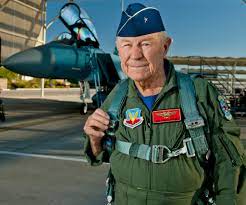

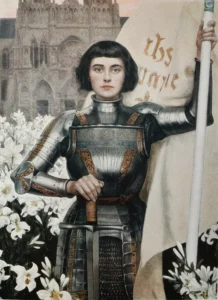
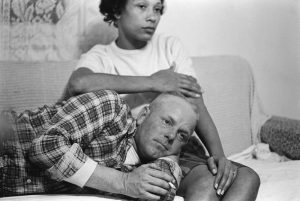
1 comment
Lauren Sahadi
This was a very inspiration story on Chuck Yeager’s journey. This story reminds us that with dedication and courage, anyone can defy limits and achieve what seems impossible. You did a great job at telling this story. I like the visuals you added as well it. Articles like this is what inspires people and you did a great job at portraying that.